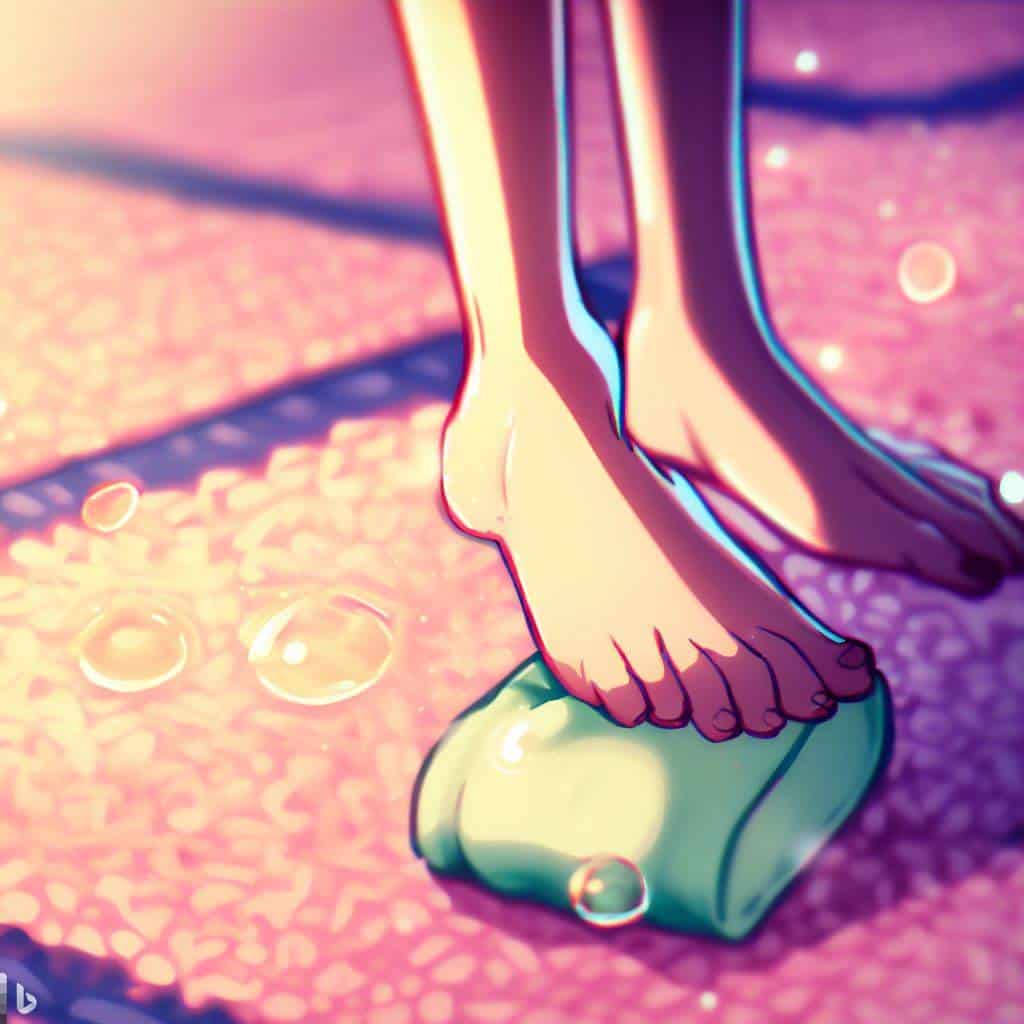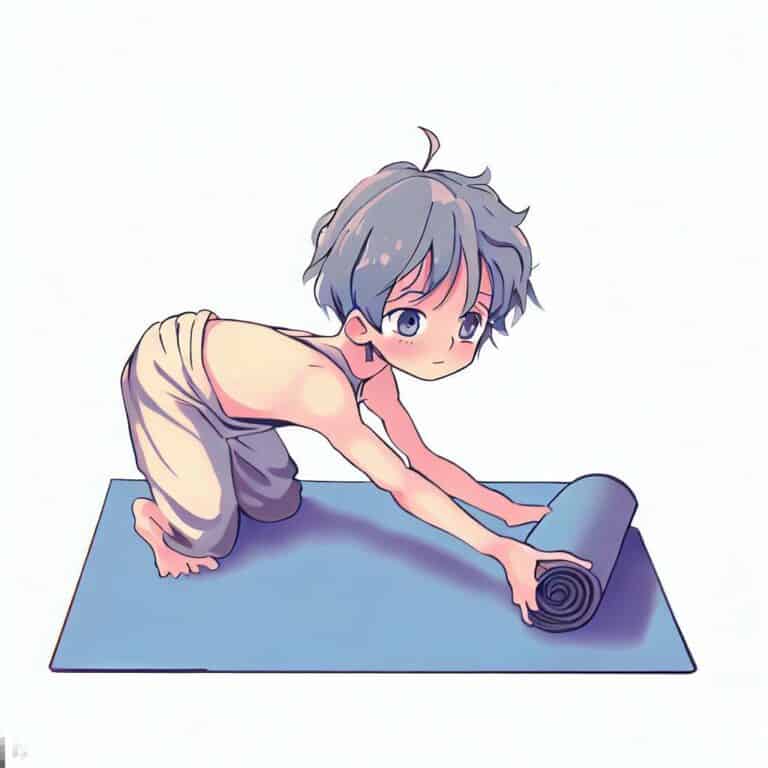Clean, Refresh, and Revive: The Ultimate Guide to Keeping Your Natural Rubber Yoga Mat in Top Condition

The Importance of Keeping a Yoga Mat Clean
As yoga practitioners, we often talk about the importance of keeping our bodies clean and pure. But what about our yoga mats? They are just as important, if not more so, in ensuring a healthy and enjoyable practice.
A yoga mat is not only a tool for enhancing your practice but also an investment in your health and well-being. Ignoring its cleanliness can lead to bacterial infections and other health issues that may affect your overall performance.
A dirty yoga mat can be a breeding ground for bacteria, fungi, and viruses. Sweat and dirt accumulate on the surface which creates an ideal environment for germs to grow.
This is especially problematic if you use public or shared mats at studios or gyms where many people use them throughout the day. Regular cleaning of your mat ensures that it stays hygienic, eliminates unpleasant odors, and reduces the risk of getting sick.

- To clean your natural rubber yoga mat, you only need a few simple materials, such as water, vinegar or mild soap, and a towel or sponge.
- Before cleaning your mat, shake off any loose dirt or debris that may have accumulated on it.
- Spray the cleaning solution onto the mat and wipe it down with a towel or sponge.
The Benefits of Using a Natural Rubber Yoga Mat
When choosing a yoga mat, there are many options available on the market today – from affordable PVC mats to eco-friendly cork mats. However, natural rubber yoga mats have become increasingly popular due to their superior quality and benefits for both you and the environment.
Natural rubber is made from latex extracted from rubber trees which makes it biodegradable and sustainable compared to synthetic materials like PVC or TPE which take years to decompose. Additionally, natural rubber provides excellent grip even when wet which ensures stability during vigorous poses such as downward dog or warrior II.
The material also has natural shock-absorbing properties that protect your joints during high-impact movements. Using a natural rubber mat also means you’ll be supporting ethical practices since most manufacturers follow fair-trade standards in sourcing their materials from small-scale farmers in regions such as South America or Southeast Asia who rely on income generation through sustainable agriculture practices like tapping rubber trees.
Keeping your yoga mat clean is essential for your health and observing the principles of cleanliness that are central to yogic philosophy. By choosing a natural rubber yoga mat, you’ll not only enjoy its superior quality but also contribute to preserving the environment and supporting ethical practices.
Understanding Natural Rubber Yoga Mats
What is natural rubber?
Natural rubber, also known as latex, is derived from the sap of the rubber tree. It is a renewable resource that is biodegradable and eco-friendly.
Natural rubber has a high elasticity and resilience, making it ideal for use in yoga mats. It provides excellent grip and cushioning, making it a popular choice for yogis who want to feel grounded and supported during their practice.
Why choose a natural rubber yoga mat?
There are many benefits to choosing a natural rubber yoga mat over other types of mats. First and foremost, it is an environmentally friendly option that is biodegradable and sustainable.
Additionally, natural rubber provides excellent grip, even when you’re sweating during your practice. This makes it an ideal choice for hot yoga or other styles of yoga where you might work up a sweat.
Another advantage of natural rubber mats is that they offer superior cushioning compared to other materials like PVC or foam. This can help protect your joints during your practice and make your yoga experience more comfortable overall.
Natural rubber mats are free of harmful chemicals like phthalates or heavy metals that can be found in some other types of yoga mats. This makes them a healthier choice for both you and the environment.
Overall, choosing a natural rubber yoga mat can provide numerous benefits for both your practice and the planet. By understanding what natural rubber is and why it’s an ideal material for yoga mats, you can make an informed decision when purchasing your next mat.
Cleaning Your Natural Rubber Yoga Mat
Materials needed for cleaning:
Cleaning your natural rubber yoga mat only requires a few simple materials. You will need water, vinegar or mild soap, and a towel or sponge.
The type of vinegar that you choose does not matter – white or apple cider vinegar both work effectively. If you choose to use mild soap instead of vinegar, we recommend using a non-toxic formula that won’t damage the natural rubber material.

Step-by-step cleaning process:
Before cleaning your mat, make sure to shake off any loose dirt or debris that may have accumulated on the mat. Once your mat is free from debris, mix your cleaning solution by combining water and either vinegar or mild soap in a spray bottle.
Next, spray the cleaning solution onto the surface of the mat using either a towel or sponge. We recommend avoiding any abrasive scrubbing tools as they can damage the natural rubber material over time.
After applying the solution to all areas of the mat, rinse it thoroughly with clean water to remove all traces of dirt and cleaning residue. Hang up your yoga mat to air dry completely before rolling it back up for storage.
Tips for Cleaning:
While it is important to give your yoga mat a deep clean every now and then, there are some steps you can take to keep it fresh and clean between deep cleans: – After each use, wipe down your yoga mat with a damp cloth to remove any sweat or dirt.
– Avoid placing your natural rubber yoga mat in direct sunlight as this can cause discoloration and warping over time. – Store your yoga mat in a cool and dry place when not in use.
– Consider using a yoga towel during practice as an added layer of protection against sweat and dirt buildup. Remember that regular maintenance is crucial for keeping your natural rubber yoga mat in top condition and providing a clean and safe surface for your yoga practice.
Tips for Maintaining Your Natural Rubber Yoga Mat
Avoid Direct Sunlight
Natural rubber yoga mats are sensitive to sunlight and high temperatures. Exposing your mat to direct sunlight can cause it to fade or become brittle over time. The best way to avoid this is by storing your mat in a shaded area or covering it with a towel when not in use if you can’t find a shaded spot.
If you must practice outside, try to choose an area that is shaded or place your mat under a tree. You can also use an umbrella or awning to block the sun’s rays while practicing outside.
Store Your Mat in A Cool, Dry Place
Proper storage is essential for maintaining the quality of your natural rubber yoga mat. When not in use, store your mat in a cool, dry place away from direct sunlight and heat sources. This will help prevent any potential damage or deterioration caused by exposure to extreme temperature fluctuations.
A good option for storing your mat is hanging it up on a hook on the wall or laying it flat in a closet. Always avoid folding or creasing your yoga mat as this could damage the material over time.
Use A Yoga Towel During Practice
Using a yoga towel during practice can help prevent excess sweat and moisture from seeping into your natural rubber yoga mat, which could eventually lead to bacterial growth and unpleasant odors. You can either use a full-size towel that covers the entire length of your mat or opt for smaller hand towels that you can place under specific areas like hands and feet during practice.
Using a towel also provides additional cushioning, which may be useful if you have sensitive joints or prefer extra support during certain poses. Plus, towels come in so many colors and designs that they add personality to any yoga session!
Conclusion
Summary of Key Points
Cleaning a natural rubber yoga mat is an easy process that involves using simple materials such as water, vinegar or mild soap and a towel or sponge. It’s important to keep your yoga mat clean to avoid bacteria buildup, skin irritation and unpleasant odors.
Regular cleaning will also extend the life of your mat, saving you money in the long run. Natural rubber yoga mats are an eco-friendly and durable choice for yogis.
Not only are they made from sustainable materials, but they offer excellent grip and stability during practice. That being said, natural rubber can be sensitive to certain oils and chemicals found in skincare products, so it’s important to maintain your mat with proper cleaning.
Importance of Regular Cleaning and Maintenance
Keeping your natural rubber yoga mat clean should be part of your regular practice routine. After each use, take a moment to shake off any loose dirt or debris before storing it away.
If you notice any stains or sticky spots on the surface of the mat, use a solution of water and vinegar or mild soap to gently remove them. In addition to cleaning your mat regularly, it’s also important to store it properly.
Avoid leaving it in direct sunlight for extended periods of time as this can cause the rubber material to break down over time. Instead, store it in a cool dry place when not in use.
Overall, taking care of your natural rubber yoga mat will ensure that you have a safe and enjoyable practice experience every time. By following these simple steps for regular cleaning and maintenance, you’ll be able to keep your mat looking and smelling fresh for years to come!






